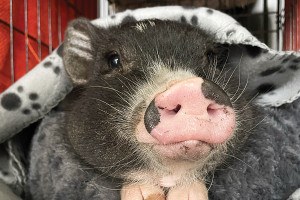Wedding Details: Picture This
In black-and-white, color or sepia, there’s something old and something new in capturing your Big Day on film.
Among choosing a venue, your dress, your invitations and the oh-so-important places to register, deciding which photographer will document one of the biggest days of your life is also one of the biggest choices you'll make while planning your wedding. Add to that the difficult task of what shots, special effects and artistic take you envision, and choosing a photographer becomes much more significant than you might have thought.
The technology available to photographers seems endless (sepia, infrared, hand-tinting), which also equates to weighty decisions for you and your groom: what style are you interested in, what questions should you be asking your photographers, what effects does he or she offer, and when it's all over, what do you do with all those photos?
The First Click
It's a good idea to do a little research before you start calling up photographers. “Couples should try to know a little about various types of photography,” says Heather Fowler, owner of Heather Fowler Photography, who has been shooting weddings for eight years. That's especially important if you're looking for a specific style, such as something old-fashioned or similar to photojournalism. “Brides need to recognize whether or not a photographer can shoot that way or create those shots.”
One way to easily get a feel for a photographer's work, suggests Fowler, is to look at the way he or she shoots an entire wedding from start to finish. That way you can weed out photographers who seem to miss your overall vision. “It should be pretty clear when you first view a photographer's work what that photographer is going to be shooting and the finished product you're going to receive,” says Cliff Mautner, owner of Cliff Mautner Photography in Philadelphia.
Main Focus
The different special effects used by your photographer can allow you to create wedding pictures stamped with your personality and style. Choosing what effect to apply to a photo is as important as deciding which photos are posed or candid. “Color is key for a beautiful sunset or an island setting, where color is more conducive to the drama of the photo,” says Mautner. The same goes for any gorgeous landscape. Images with “bright blue skies, colorful flowers, a particularly compelling background or maybe colorful details on a bride's dress are so great in color,” says Laura Novak, owner of Laura Novak Photography in Wilmington. “Bright, cheerful moments often look great in color because there's just more impact than black-and-white.”
And yet, black-and-white pictures remain an album staple. “Sometimes it can bring a more emotional feel,” says Novak. “Photos of the bride getting ready tend to be a really emotional, anticipation-filled moment, and black-and-white captures that so well.”
Black-and-white shots are not only good for highlighting high-emotion events, but can also help single out subjects during special moments. “When you have a distracting, colorful scene and you're trying to isolate the intimate moment between the bride and the groom,” says Mautner, “a black-and-white film can eliminate the background and allow you to focus on the main subject, therefore capturing some significant intimate moments.”
Sepia adds an overall brownish tint to a black-and-white photo, for an old-fashioned look. “Countryside settings, where there's maybe an old church, stone house or barn, are fantastic in sepia,” says Fowler, although she isn't seeing as much of this effect as she used to. Novak thinks that sepia lends an artistic feel: “I personally like a touch of brown in some photos simply to warm them up,” she says.
Glowing Highlights
For couples in search of something extraordinary, these photographers agree: infrared and hand-tinting are rarely used filmic effects that can be quite sophisticated. Hand-tinting is when an artist applies paints and dyes to the actual film, as opposed to doing so with computer software. The result, says Mautner, is gorgeous. “It's really a lost art. It's for a couple who wants something that truly no one else has. It adds warmth to an image, something subtle without being cheesy.”
Infrared film captures infrared light that is invisible to the naked eye. It gives photos a grainy, dreamlike effect that is ideal for outdoor portraits. “”You have to use infrared judiciously,”” says Mautner. ““Not all images can work well with this effect. It’'s gorgeous in an autumn setting where the light is bright and the colors are glowing. It makes the entire image glow.”” Fowler agrees: ““It gives a surreal feeling to a photo. Use it in a natural setting where the sun is bright, the dress is bright, the grass is glowing.””
Finished Product
Then savor those photos by displaying them in your home. Avoid blowing up portraits of just you and your honey, and instead try something similar to “a work of art,” says Fowler. “Images where the couple is part of a landscape are so classy to frame. Choose an image that, if you saw it in a gallery, you'd still want it in your home.”
Candids are a key option for framing — but in smaller sizes than those sprawling landscapes. “Candids are great because they remind you of the way you were feeling at that moment,” says Novak. Choose candid photos and one or two larger images to incorporate your wedding into your decor.
In the end, you need to trust your photographer to create images you'll like. “You and your photographer's personalities need to click,” says Fowler.
It's about developing open communication and letting the photographer “get a feel for you and what you love,” says Mautner. And that is what makes for wedding photos that you know you'll enjoy for years to come.


